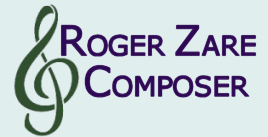|
Full Orchestra
String Orchestra
Wind Ensemble
Vocal
Chamber
Solo Instrumental
|
 This sonata was commissioned by saxophonist Scotty Phillips and premiered at the 2016 North American Saxophone Alliance Biennial Conference in Lubbock, Texas. It was composed while in residence at Copland House, Cortlandt Manor, New York, as a recipient of the Copland House Residency Award.
This sonata was commissioned by saxophonist Scotty Phillips and premiered at the 2016 North American Saxophone Alliance Biennial Conference in Lubbock, Texas. It was composed while in residence at Copland House, Cortlandt Manor, New York, as a recipient of the Copland House Residency Award.
While growing up in Florida, I have many memories related to rain, from dodging downpours at theme parks to enduring the lashing from a tropical storm. Rain is, of course, absolutely vital to our survival, and we are extremely sensitive to any changes in the rain pattern. Extended droughts strain our resources, but the excessive rain that often follows is even more damaging, causing floods, landslides, and sinkholes. This composition captures three facets of the rain cycle.
The first movement is about the restlessness and aggravation of drought. The rhythms are constantly shifting and asymmetrical, with the saxophone frequently angrily jumping between registers. The piano never uses the damper pedal, so the soundscape is devoid of the comfort of sustaining resonance. As the drought continues, the music frantically and desperately accelerates out of control to close the movement.
Many times, as the dry winter gave way to the wet spring, I remember the refreshing smell that would emanate from the ground as the first raindrops began to fall. This scent is called "petrichor," and offered relief from the preceding dryness. Every time I smell this today, I feel a bit nostalgic for those days in my youth. Finally allowing the use of the damper pedal, I evoke this nostalgia as well as comforting relief as the drought is now over. The disjointed and panicked cries of the first movement are replaced with lyrical and delicate melodies; the biting dissonance is replaced with diatonic harmonies. The discovery of the damper pedal allows for a glorious swelling of sound that leads to the climax of the movement, but a cadenza by the saxophone returns to the poignancy of the opening bars.
The third movement, deluge, returns to materials from the first movement, leading off with the forceful piano gesture that opened the sonata. Instead of the clarity and desolation of the first movement, there is an almost constant flow of running notes, and the sonic density increases steadily as the movement progresses. The saxophone alludes to a flowing melody from the second movement, but it is inundated with descending arpeggios in the piano. A scherzando section references some of the rhythmic shifting of the first movement, and it leads to another barrage of arpeggios and running notes. Music from the first movement returns, but this time it is submerged, with the incessant damper pedal rarely letting the music come up to breathe as it gets more and more restless and panicked. Excess is often not the solution to the problem of absence. One final return to the lyrical melody is little relief, as it drowns in a flash flood of tone clusters and glissandos.
|

 This sonata was commissioned by saxophonist Scotty Phillips and premiered at the 2016 North American Saxophone Alliance Biennial Conference in Lubbock, Texas. It was composed while in residence at Copland House, Cortlandt Manor, New York, as a recipient of the Copland House Residency Award.
This sonata was commissioned by saxophonist Scotty Phillips and premiered at the 2016 North American Saxophone Alliance Biennial Conference in Lubbock, Texas. It was composed while in residence at Copland House, Cortlandt Manor, New York, as a recipient of the Copland House Residency Award.